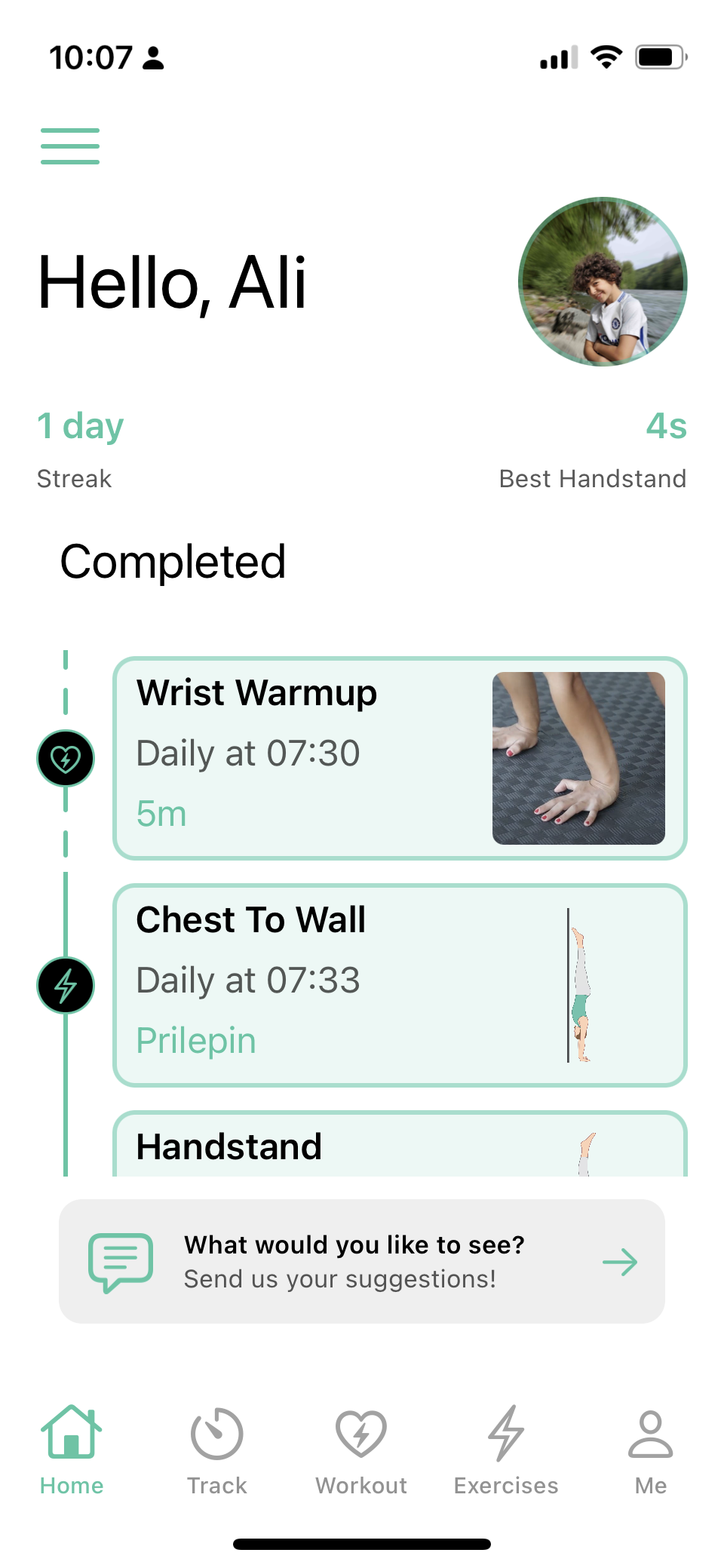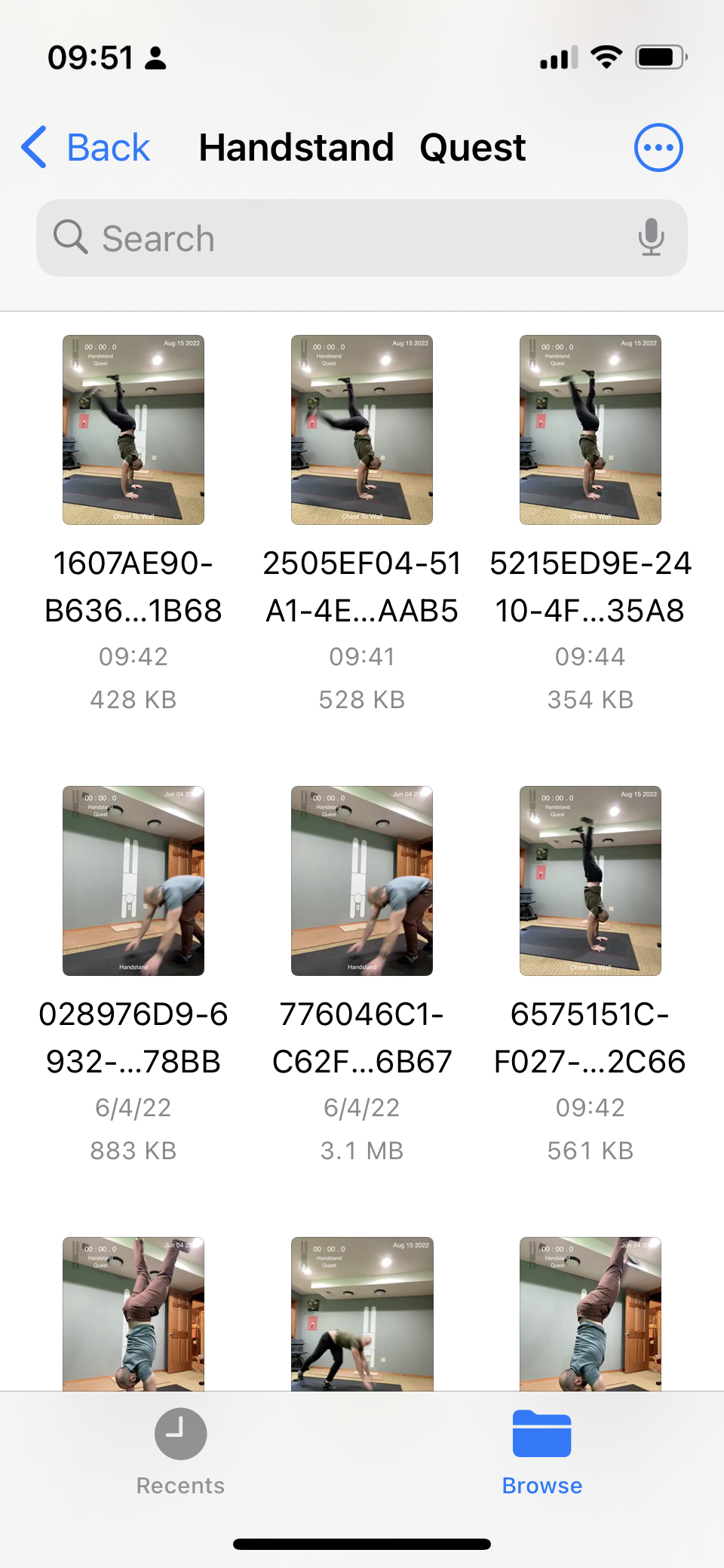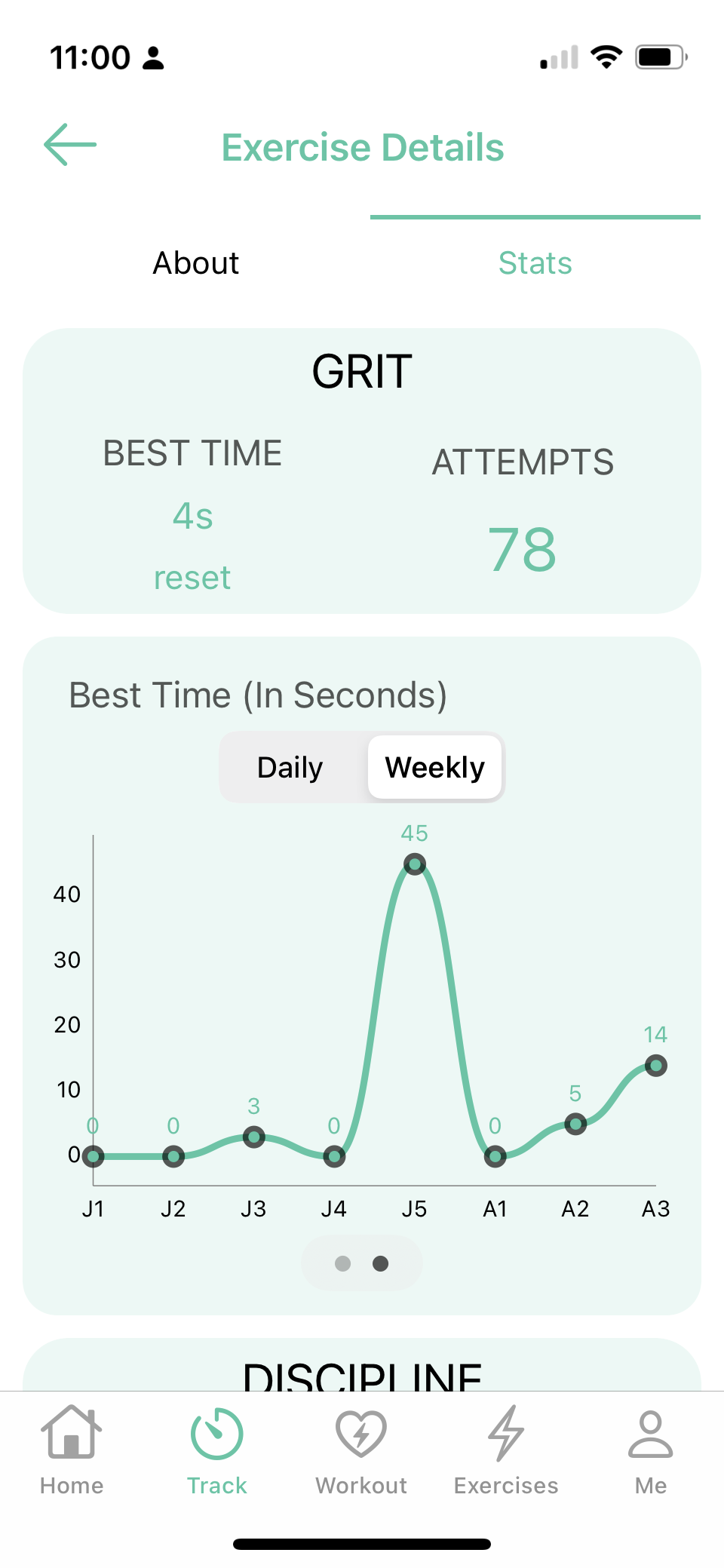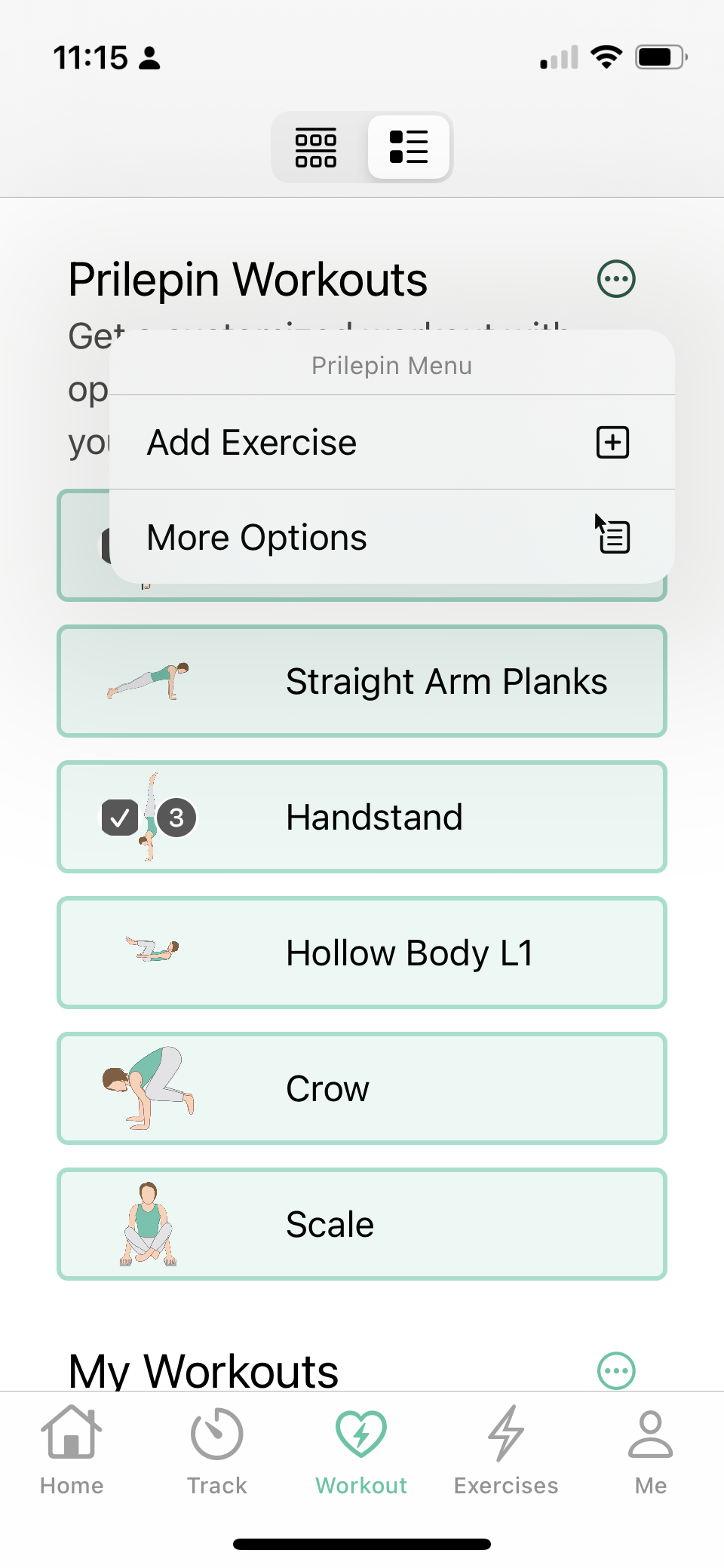Setting Goals and Forming Habits
Whatever it is that you are trying to do, having a specific, measurable, and challenging yet attainable goal will significantly help you in achieving the results you are pursuing.
Let's say you're interested in doing a handstand or improving your movement skills. How do you know where to start? How do you check your progress?
Once you have a goal, what are you going to change in your life to make it happen? How will your day or week change? What new habits are you going to form?
Setting Goals
What sets high achievers apart from those who continue in their regular “life is happening to me” routine, is effective goal setting.
“If you don’t design your own life plan, chances are you’ll fall into someone else’s plan. And guess what they have planned for you? Not much.”
Goal-setting typically yields a success rate of 90%. People who write their goals are more likely to achieve their goal than those who don’t by 50%.
“This one step – choosing a goal and sticking to it – changes everything.”
Edwin Locke’s goal-setting theory argues that for goal-setting to be successful with desired outcomes, goals must have:
Clarity: when a goal is vague, it has limited motivational value. Ensure the clarity of the goal by making it specific, measurable, and time-bound.
Challenge: people are often motivated by achievement, and a goal will be judged based on the significance of the anticipated accomplishment. Choose a goal that is difficult, yet attainable. Goals that are too simple may even cause us to give up. Goals should be challenging enough to motivate us without causing us undue stress.
Commitment: Do you have a well articulated "why" for pursuing this goal? Have you accepted it and are ready to prioritize it and invest the time in it? How serious and committed are you about it?
Feedback: You cannot improve that which you cannot measure. By making a goal measurable, it creates a clear feedback mechanism on where you are in terms of achieving it. When a goal is accomplished, it makes us feel good. It gives us a sense of satisfaction. If we don’t get any feedback, this sense of pleasure will quickly go away and the accomplishment may even be meaningless.
Complexity: Try to keep it simple. Having too much complexity could make it overwhelming to achieve the goal.
Edwin Locke’s goal-setting criteria
Goals not only affect behavior, but they also help mobilize your energy, which leads to a higher effort overall.
“A goal properly set is halfway reached.”
Setting Goals in the Handstand Quest App
Ok great, so the above theory about the importance and approach to setting goals makes sense, how can the Handstand Quest app help you? Let’s take a few example goals.
Be able to hold a handstand for an average of 10 seconds.
Alright, this goal is clear and measurable. Depending on where you stand, it might be too challenging or not challenging at all. Pick a number of seconds that is challenging yet attainable.
Within the Handstand Quest app, on the Home tab, in the “Your Goals” section, click “Add” to add a new goal. Select “Exercise”, search for and pick the “handstand” exercise, change Goal Type to “average” and update the Goal Metric to “10 seconds”.
Do a total of 500 push-up reps.
Another specific and measurable goal. For the challenge, you can decide “by when” you want to achieve the timeline, and based on that, set the right habits in place in the app, which we’ll cover in the “Forming Habits” section.
Practice for 30 consecutive days.
Beyond exercise-specific goals, you could create “process” based goals that push you to practice more regularly. This goal is both specific and measurable. It gets you to practice daily for at least 30 consecutive days.
Forming Habits
What are great goals without habits? They offer the destination without the steps to get there.
“You do not rise to the level of your goals. You fall to the level of your systems.”
Atomic Habits
What follows in this article is based on the book Atomic Habits, written by James Clear.
A habit is an automatic response to a specific situation, resulting from a practice done regularly.
Why Tiny Changes Lead to Remarkable Results
If you get 1% better each day, you will become 37% times better in a year. Just like money compounds, small repetitive behavior compounds self-improvement.
Imagine you can do 5 sec handstand today, and you push yourself to improve by 0.1 sec every day, you’ll end up at 41.5 secs by the end of the year.
Source: Atomic Habits
The concept of overnight success doesn’t exist. Typically, we expect progress to be linear. However, the results of our habits are delayed. Until you reach a critical threshold, your small changes will seem to make no difference. That's why, when you stay motivated and you keep pushing to improve by practicing consistently, you will overcome that threshold, and it will appear like an overnight success.
One thing that helps here is having mechanisms to measure the progress and monitor that 1% improvement one day after the other.
Source: Atomic Habits
That’s why, when you’re first onboarding on the Handstand Quest app, we give you the heads-up expectations to get in on it for the long run, to make it part of who you are.
Identity: Your Habits Define Who You Are
The word identity was originally derived from two Latin words meaning "repeated beingness".
It all starts with who you want to become. You change your identity by changing your beliefs. Your identity is the core of behavior change. The habits you choose today are not about achieving something, instead, they're about becoming someone. The intrinsic motivation that comes from it will propel you forward to form habits that will help you achieve results, goals and outcomes.
So when it comes to handstand practice, what’s your identity relative to that? Are you a hand-balancer? A gymnast? A movement practitioner? A pole dancer? You decide what that identity looks like, and the chances of forming a handstand practice habit will increase as long as your identity aligns with it.
Source: Atomic Habits
The Habit Loop
For a habit to form and not get lost, it needs 4 factors to to exist: (1) a cue to remind you, (2) a craving to motivate you, (3) a dopamine response giving your a sense of making progress, and (4) a reward to bring you back to repeat the behavior and over time form the habit.
You would set yourself up to succeed in forming a new good habit by enabling the 4 factors to take place.
From this comes the 4 laws of behavior change that James Clear talks about in his book. Let’s say you want to do 2 minutes of handstand practice every day, how would you apply the 4 laws to increase the odds of forming this habit?
Law #1: Make it obvious.
Make the cue obvious by designing your environment. Get specific about the when and where. This is a concept that James Clear calls “Implementation Intention”.
I will [BEHAVIOR] at [TIME] in [LOCATION].
For the 2 minute handstand practice habit, what location in the house is best for it? Find a wall with enough space in front of it and make it your practice spot.
Identify when is a good time for you to do it. First thing in the morning after brushing your teeth, before your morning coffee, right before lunch, whatever timing works best for you.
For me personally, location-wise, I put a Handstand Quest decal on the wall where I practice handstands. It’s clearly not a must, but it helps serves as an identity reminder for me (both obvious/cue and attractive/craving).
Handstand Quest Wall Decal
Time-wise, since I go to an F45 gym almost on a daily basis, I decided to do my handstand practice right after I come from the gym when I get home.
This is a concept that James Clear calls “Habit Stacking”.
After [CURRENT HABIT], I will [NEW HABIT].
Law #2: Make it attractive.
What excites you to improve your handstand? What are the benefits of doing so? Is it the challenge? A celebration of what your body can do? Building strength, balance, and mental focus? This is related to the Identity part we talked about earlier. If you want ideas, check out The Handstand Mindset for top reasons why people choose to do handstands, but at the end of the day, your reason should come from within.
Will getting it done right before drinking your morning coffee or tea make it attractive. Just before that reward that is the first thing you want to do in the morning?
Again, this is another form of “habit stacking”.
[CURRENT HABIT] ==> triggers (cue) ==> [NEW HABIT] ==> that is rewarded by ==> [CURRENT HABIT THAT I LIKE]
One way to sustain attractiveness for a habit is to surround yourself with people who have already made it a part of their life and their identity. Make your personal handstand quest a shared one. Join a local community (hand-balancers, gymnasts, yoga, calisthenics, capoeira, etc…) or an online community. Two online handstand communities I find welcoming:
Law #3: Make it easy.
Start with something really easy, once it forms as a habit after many repetitions, start making it a little harder.
The more the repetitions (consistency), the more likely it will become an automatic response in your daily life that you don’t have to put any effort to start (i.e. a habit).
Source: Atomic Habits
For example, depending on your current level, you may choose to practice just two minutes of handstands with this simple routine:
Wrist Warmups (1 minute)
Belly to Wall (30 sec)
Back to Wall (30 sec)
Law #4: Make it satisfying.
Immediate gratification is the reward that makes habits stick. What kind of a reward do you want to give yourself after performing the 2 minute handstand habit?
Tracking progress can be a reward of its own. For example, tracking a streak (consecutive days doing habit) and seeing how far you go? Seeing progress on your ability to hold a handstand over time, etc..
Of course, there are other ways to reward yourself. How about recording a video? Sharing your workout summary on social media or directly with a friend or a group that you’re part of?
Forming Habits in the Handstand Quest App
So how does the Handstand Quest app help you form habits that enable you to improve your movement skills?
Lt’s go back to the 4 laws required for a habit to form: (1) cue (2) craving (3) response (4) reward.
Law #1: Make it obvious.
The Handstand Quest App allows you to create a habit, at a specific time, on a schedule that you prefer.
On the Home Tab, under the “Today’s Habits” section, click “Add” to add a new habit. You’ll notice that you can create two types of habits:
Exercise: Focus on improving a specific skill, whether available as part of the 150+ exercises in the catalog, or a custom skill. Learn more about creating custom exercises.
Workout: Do a specific sequence of exercises (a workout) that you could follow easily. You can pick one of the many workouts available in the app, or even design the exact specific exercises, time/reps, etc.. Learn more about creating custom workouts.
We’ll cover later the habit configuration for each of the exercises and workouts, but for both, you can specify the time, the schedule as in how many days each week, and you could even enable a reminder with a custom message to give you a cue (make it obvious) when you should do the habit.
Exercise Habit Configuration
For an exercise, you could pick a specific exercise from the catalog or a custom one.
You can then select the practice mode that you want.
Focused: this mode lets you focus on a specific skill or exercise for a certain number of minutes.
Prilepin: this mode creates the right level of challenge for you without pushing you too far. It generates the optimal number of reps/sets for you based on your best record.
Max Effort: in this mode, you focus on trying to beat your previous record.
Workout Habit Configuration
For a workout, it’s simple. You pick the workout from the list of workouts in the app (including custom workouts), or you let the app choose for you a random workout.
There are 3 cues built into the app to help you get right back into the habit.
If you have enabled a reminder for your habit, you will get a notification at the time when you’re supposed to do the habit.
If you have not worked out for a day or more, a badge will show up on the app with the number of days you have not worked out.
The very first thing you will see when you open the app (The Home tab) is the list of your goals and habits.
Law #2: Make it attractive.
The app will help you make a habit attractive through the following features:
Habit / Task Completion
Video Gallery on Device
Workout Activity and Shareable Summary
Immediate Feedback on Progress via Goals
Habit / Task Completion
After completion of a habit, it will show up as “completed” so you have that sense of achievement.
Video Gallery on Device
Video feature in the app lets you take videos of your exercises and save them in an organized way (by exercise) in the Gallery on the device. Videos are stored in the “Files” app on your device and not in the cloud.
Beyond getting the ability to watch your form and improve it, you can easily share your videos with friends or on social media.
You can also record your exercise videos hands-free (via voice recognition) with an overlay timer. To learn more about using the app with voice, check out our post about Workout using voice commands!
Workout Activity and Shareable Summary
You can view your activity on the calendar, drill down to see the day’s exercises and share on social media.
Immediate Feedback on Progress via Goals
Progress on goals gets automatically updated, so you can see live and instantly, after you complete a habit (exercise or workout), how that’s helping you to improve.
Law #3: Make it easy.
Opening the app and seeing your habits right away will make it easy to jump into the habit and get it started.
Keep the number of habits low. Start with less than three 2-minute habits, then expand and challenge yourself more once the current habits fully form.
Law #4: Make it satisfying.
Adding a “streak” goal can help you stay laser focused on consistency, keeping track of your streak number can be a rewarding mechanism to congratulate yourself for always coming back and keeping up the habit.
Another way the app makes it satisfying is through the stats that show you your progress over time (daily, weekly, monthly) overall or per exercise. You can see how you’re progressing with time spent and best records.
The Sorites Paradox
The Sorites Paradox is an ancient Greek parable that talks about the effect one small action can have when repeated enough times.
The secret to getting results that last is to never stop making improvements. Small habits don’t just add up, they compound.
In fact, this is literally the story of the Handstand Quest App. With a very demanding full time job and family/life demands, I still managed to get it to where it is today with small tiny changes compounded over the last 3+ years.
In the context of your handstand practice, once new habits form or goals are achieved, make sure to update your goals and habits to challenge you enough so you’re always making improvements.
Keep It Challenging Yet Attainable
The Goldilocks Rule states that humans experience peak motivation when working on tasks that are right on the edge of their current abilities.
Don't make it too easy but also don't make it too hard.
Source: Atomic Habits
The Prilepin capability in the app will do magic for you on this front. Based on your best record on a certain exercise, it will generate a number of sets/reps that is right in the Goldilocks zone!
That’s why I’ve decided to plug it in multiple places in the app for easier discovery.
Conclusion
If there’s one thing to take away from this whole article, I would recommend to keep it simple, and initially, minimize the number of goals and habits, so you stay focused and also set yourself up to actually form a habit.
For me, I’ve decided to set my habits up as follows:
A workout habit, with a custom workout for wrist warmup, including 4 wrist warmup exercises, 30 seconds each.
A “Prilepin” exercise habit for “Chest to Wall” to keep pushing me day over day to comfortably increase my time upside down.
A “Max Effort” exercise habit for “Handstand” where I keep challenging myself to beat my record from the previous day.
For my goals, I’ve also decided to keep it simple with only two goals.
Handstand average of 15 secs
Chest to Wall average of 1 minute
I’m really excited to see how the new Goals and Habits capabilities will be leveraged to help people get better at handstands or some other skills/exercises.
If you have any questions or feedback, feel free to leave a comment on this post or get in touch with me directly at info@humanquest.net.
Remember, tiny changes for remarkable results!

















































